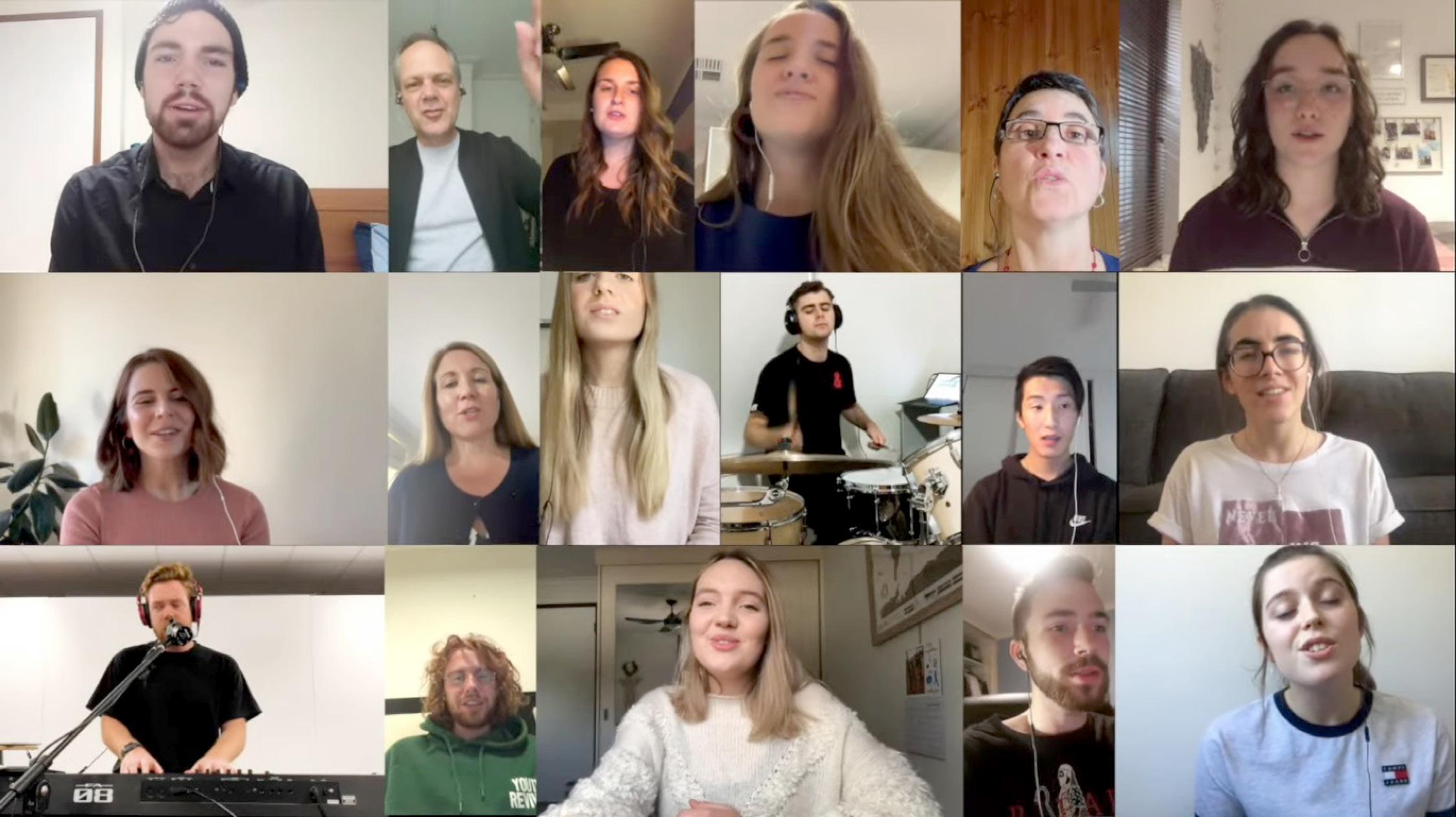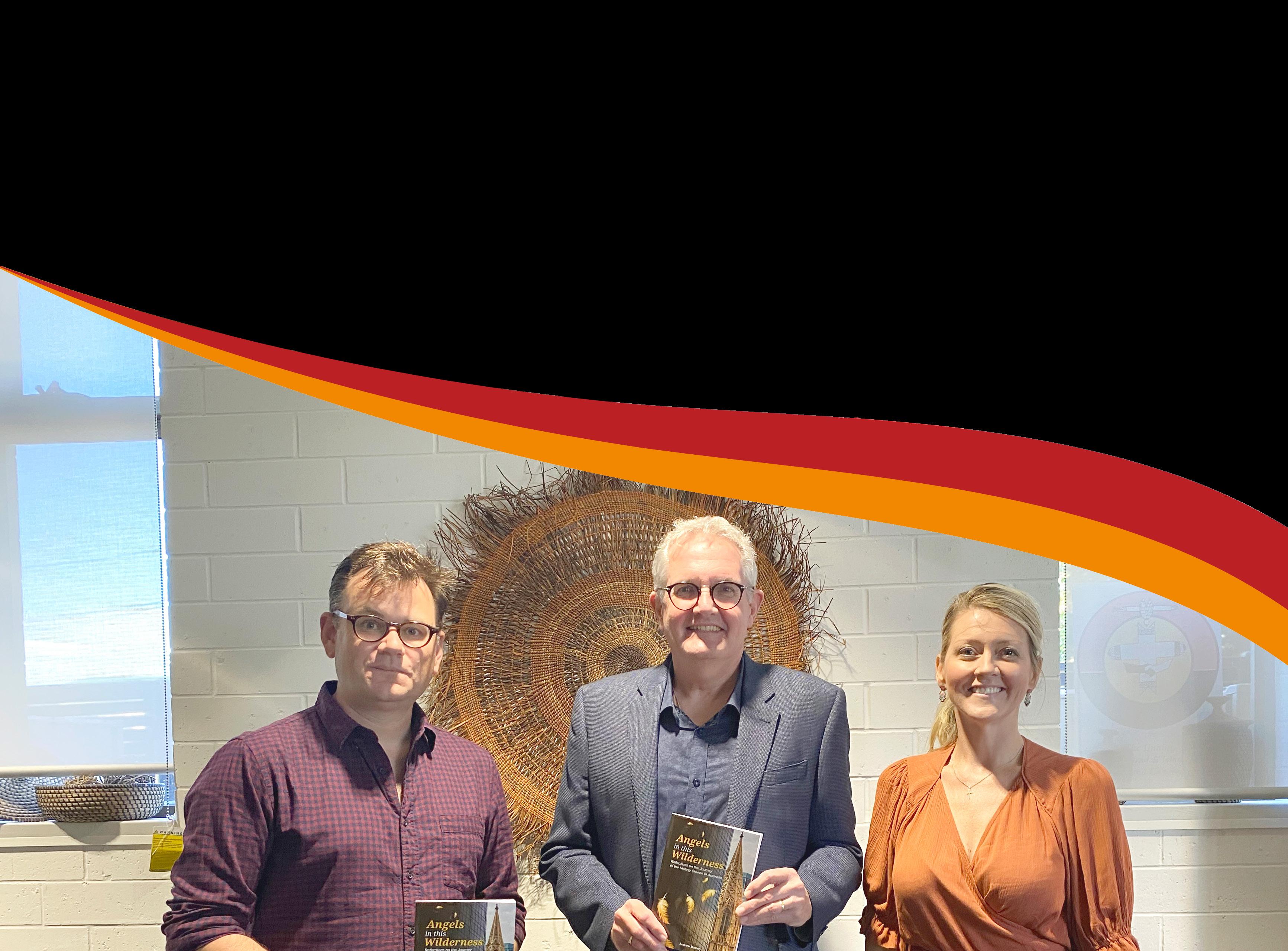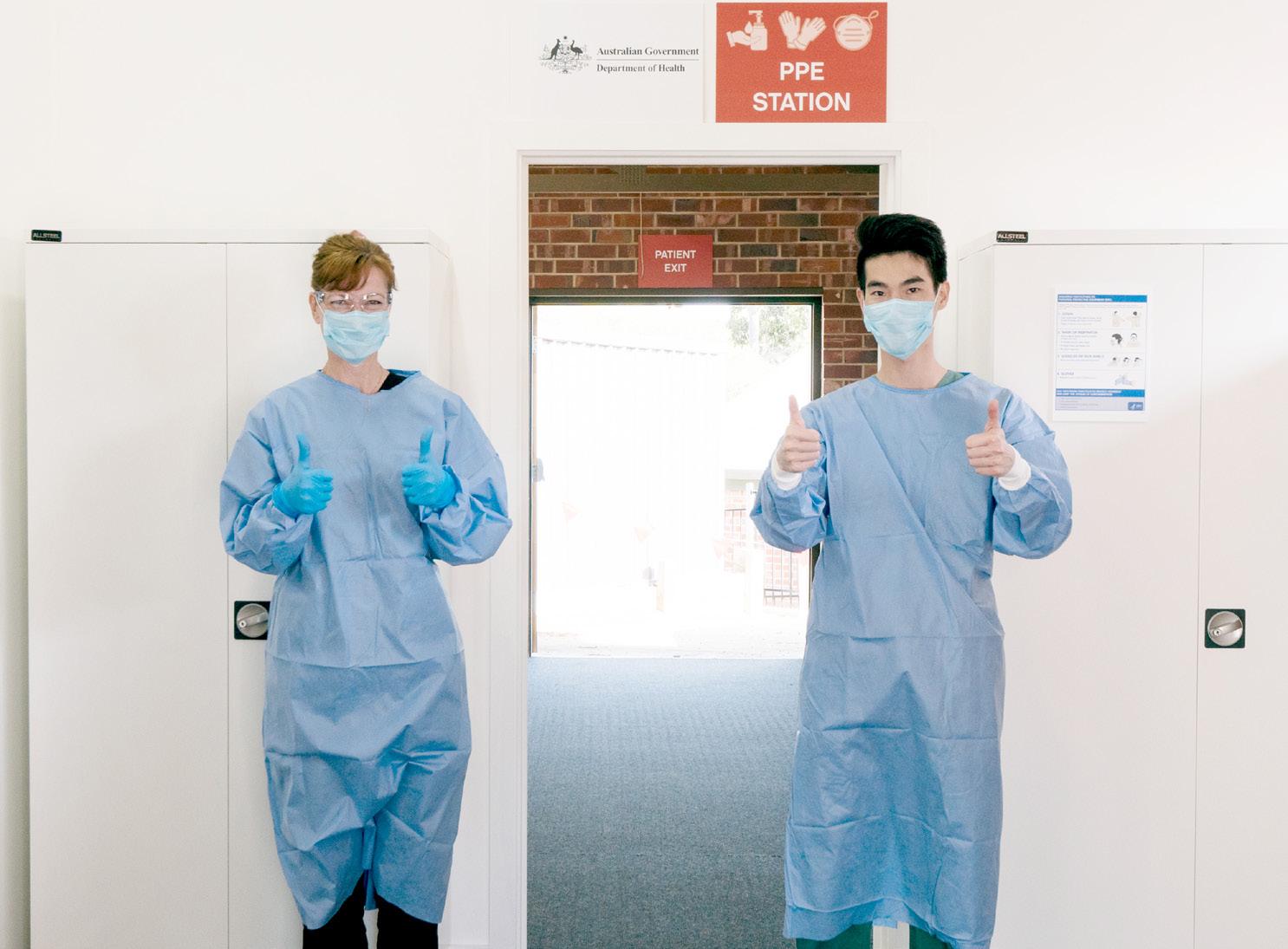
8 minute read
The church has left the building
Petronella Lowies Online church is not a new concept. And recordings of sermons have been distributed ever since the tape recorder was invented. Despite this, COVID-19’s isolation measures have pushed most of us into uncomfortable territory – a world of Zoom, WhatsApp, FaceTime, Facebook, video cameras and editing. It has been a steep learning curve for both those in ministry and those to whom they minister.
“No one starts a new ministry with only half a week’s notice – at least not normally. But these are not normal times,” says Rev Jenni Hughes who ministers with The Centre for Music, Liturgy and the Arts (CMLA) as well as at Brougham Place Uniting Church.
During the last week of April the CMLA held a forum (via Zoom) for conversation about how ministers, lay leaders and worship teams have responded to the challenge of continued ministry during a time of physical distancing. According to Jenni, the short answer is with love.
“With love for God, love for the church, love for the members, love for the community and love for the world. The answers about how this was executed though varied widely – from online worship to hand-delivered worship guides,” she says.
Fully immersed in technology
At Seeds Uniting Church the ministry team had already been talking about starting online services for over a year. It is South Australia’s largest UCA congregation and, while they have many members over 70 years old, most members are younger with access to and knowledge of online space.
“We recognise that our reach could be greatly expanded by a significant online presence,” says Seeds UC’s Senior Pastor Rev Dr Jonathan Davies. “However, funding was always an issue. At the moment we are using borrowed equipment for most of what we are doing.”
Since the isolation measures took hold, Seeds UC has been broadcasting three Sunday services as well as a Friday
With the online services by Brougham Place UC, Rev Jenni Hughes and the rest of the ministry team encouraged people to worship, not to ‘watch’ worship, but to participate.
evening youth service. These are recorded mid-week while the ministry team hosts live chat during the broadcasting of the services. It has involved hard work and a lot of learning for everyone involved, but the results have been very satisfying.
“One of the biggest outcomes for us has been a dramatically increased ‘attendance’ right across the board. Our numbers would be somewhere around double that of this time last year. We are also getting comments from interstate as well as country SA. It’s really encouraging and it has never been easier to invite someone to hear the Good News than it is now. ”
He warns though that the biggest issue is not providing the service but engagement and relationships. The Seeds UC ministry team has been phoning everyone on their database, sending out emails, setting up Zoom meetings with youth groups and more in an effort to do just that.
Jenni reports similar increases in ‘attendance’ for Brougham Place UC’s online services.
“Our worshipping community has expanded some weeks to quadruple its normal size,” she says. “We did what we could when we could. We filmed on iPhones with no special lighting or microphones. We figured if people were looking for high-level production, they would turn to any other opportunity from the great spectrum that is available online. However, these actions had surprising outcomes because somewhere in all this is 'connecting' . ”
Jenni explains that, throughout, they encouraged people to worship, not to ‘watch’ worship, but to participate.
Port Augusta UAICC was quick to respond to the outbreak of the COVID-19 virus. Rather than recording services, they started gathering as a church via Zoom on 23 March.
“As the body of Christ we focused on how we can be most loving to everyone, especially those most vulnerable,” explains Chelsea Size, Training and Formation Coordinator, Congress SA. They provided both practical advice and technical support to all their members, intentionally used Facebook to stay connected and developed digital content that encourages and deepens faith.

On Easter Sunday the Seeds UC worship team’s special recording of ‘Resurrecting’ (originally by Elevation Worship) showcased the huge effort that went into producing an online church service. The video clip was shared on social media and viewed by nearly 16,000 people on that platform alone.
Rev Denise Champion says: “Being an indigenous person over fifty, I know how important it is to self-isolate. This is a serious time, but we also made a serious commitment to our young people to always meet together as the church. What we’re doing together is diaconal in nature - we are ministering to the scattered congregation. We still gather on Sunday but it is in a different form. We’re still pastorally caring for each other. We haven’t shut up shop.”
The members have shown true appreciation of being able to meet in this way too. "I really appreciated the Zoom gathering and enjoyed the worship and fellowship with all our UAICC members. The
breakout groups are really great, giving us space to learn from each other, hear stories and a lovely space of building relationships with each other. Overall I just think it is absolutely awesome. Love it," commented Port Augusta UAICC congregation member Maria Anderson Tanner.
When online church is not an option
At Unley Uniting Church, Rev Alison Whish has had reservations about recorded worship services for quite some time. Her thoughts are echoed by Jenni’s comment about ‘participate, don’t watch’.
“Virtual worship requires much, much more than putting a camera in front of a preacher in an empty church and recording,” states Alison. “We made a couple of attempts at Unley UC to provide virtual worship but I don’t think any of us felt the result was worth the effort. About 25% of the congregation does not have a computer or smartphone and so these people are shut out from that. Besides, no one in our congregation has the skills to make it happen either.”
Instead, Unley UC referred members to virtual services available elsewhere: through the UCA’s Assembly Facebook page and those of other local congregations. This is something that many of the country congregations have done as well.
“I had to learn more about present computing versus 20 th Century computing, which was more familiar to me,” says Maxine Brown, an 82-year old member of Padthaway Uniting Church who chose to self-isolate with her husband Terry. “And I was forced to learn more about my smartphone, which had always been too smart for me. But we loved the fact that church services and appropriate addresses were given by leaders such as Bronte Wilson and Dr Deidre Palmer, and listened to by so many people, especially over the Easter period. Thank you, God!”
Like others in ministry, Alison uses WhatsApp and Zoom to connect with those who can access this technology. Those with no online access receive hand-delivered printed resources.
…no virtual church service will ever be able to replace ‘the real thing’. But it is a way to reach the curious, the non-believers or the shy.
Similarly, Ascot Community Church very quickly dismissed the idea of online worship as they wanted to make worship accessible to all their members, especially the disadvantaged among them. Around a third of their members have no internet access.
Their ‘Worship at Home’ printable resource was emailed to those with access and personally delivered to those without. At least 15 other UCA congregations are making use of the Ascot Park resource too.
“Feedback from the congregation has been that they appreciate knowing we are all worshipping together, using the same
Port Augusta UAICC’s commitment to their congregation’s young people ‘to always meet together as the church’, resulted in joyful church services via Zoom.

material, at the same time on a Sunday morning,” says Rev Cheryl Wilson.
For Cheryl though, the most interesting feedback has come from those on the ‘fringe’ of the congregation: the occasional attenders, the ones who only participate in certain ministries or the frail who usually cannot attend.
“It is this group of people who seem to be the most appreciative of the worship resources, feeling a sense of belonging and connection in a way that they had not necessarily had previously. It has caused me to reflect on why it had to take a global crisis for us to stop and make more effort to connect with the people on the fringe of our church.”
What do we keep?
Everyone agrees that no virtual church service will ever be able to replace ‘the real thing’. We are therefore not in danger of these services overtaking actual attendance post COVID-19. But it is a way to reach the curious, the non-believers or the shy.
Seeds UC is currently working on ways to continue with their form of online church as a supplement to those who cannot or will not attend in person. “If we can afford it, we think it should happen,” says Jonathan.
When the time comes that congregations can once again gather in a building for worship, Cheryl believes that she would consider continuing to produce and print a worship resource.
“It would take a little extra time and effort, but what a benefit for those who are unable to come each week!” she says.
Maxine and Terry in Padthaway have heard from old friends and distant family who had not made contact in many years. They will keep those connections open. They have also learnt to sit and talk, or listen to music, or just sit and be quiet and to appreciate each other’s thoughts. They will keep that too. “Maybe it will help us to better face a new world, or at least a changed society. Thank you, God!”










